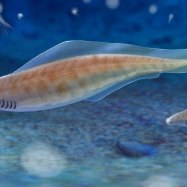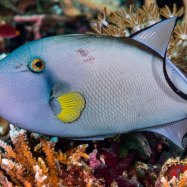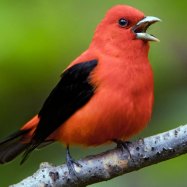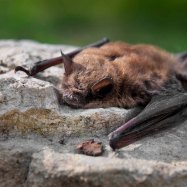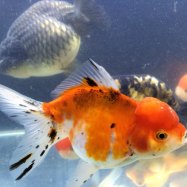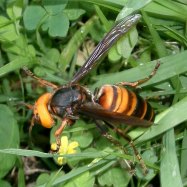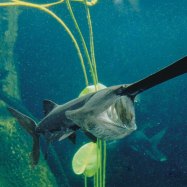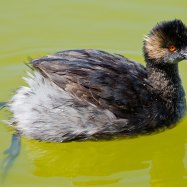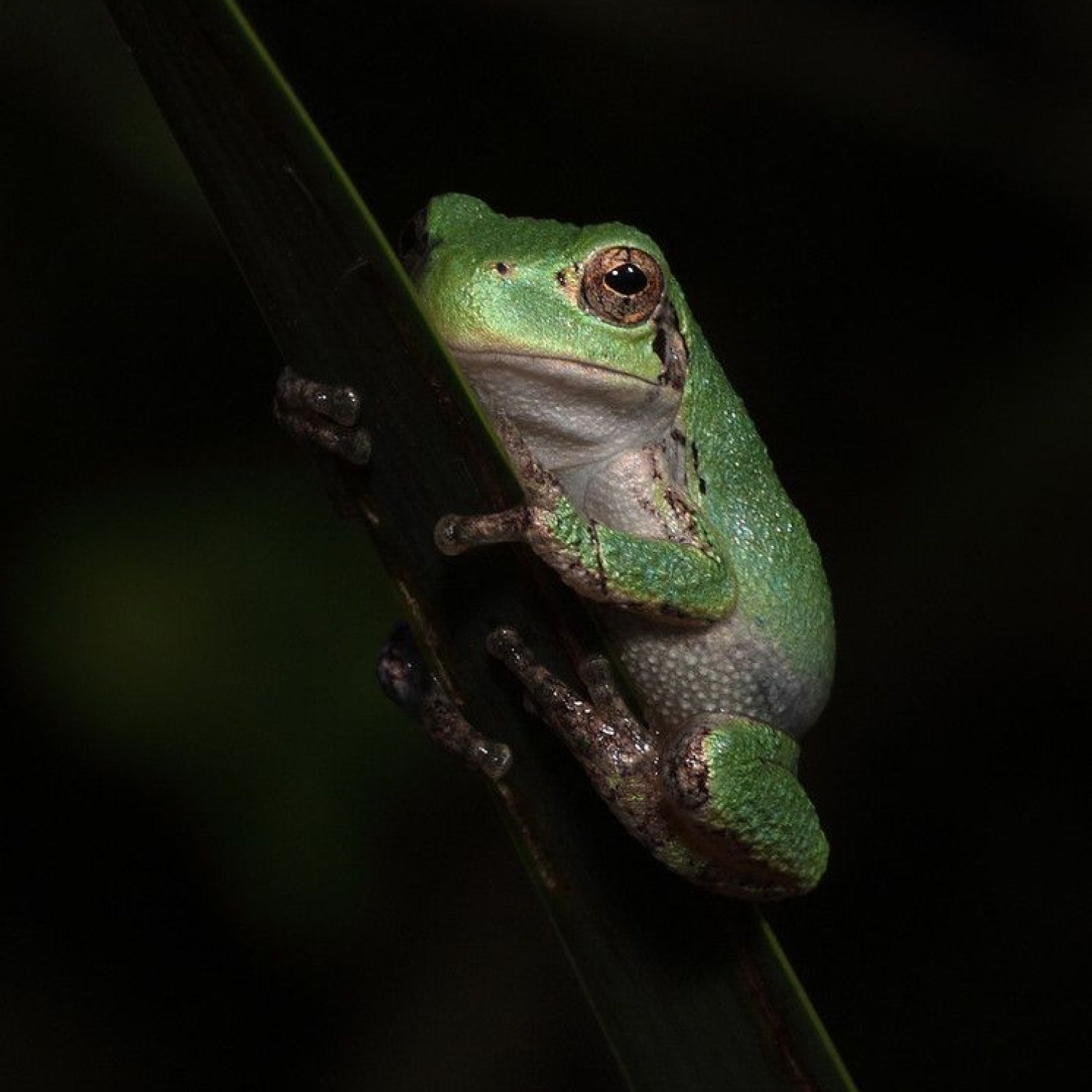
Gray Tree Frog
1.5 - 2.0 inches
Meet the Gray Tree Frog, a small and compact amphibian found in North America. With a length of 1.5 - 2.0 inches, this frog is a master of camouflage and can change its color to blend in with its surroundings. Belonging to the Hylidae family, the Gray Tree Frog is a favorite among frog enthusiasts and a common sighting in backyard gardens.
Animal Details Summary:
Common Name: Gray Tree Frog
Kingdom: Animalia
Habitat: Woodlands, forests, swamps, and marshes
The Cool and Camouflaged Gray Tree Frog: Secrets of One of North America's Most Fascinating Amphibians
In the animal kingdom, there are certain creatures that captivate us with their unique colors, shapes, and habitats. And there is one particular amphibian that stands out among the rest – the gray tree frog. This small but mighty creature, scientifically known as Hyla versicolor, is a fascinating animal that can be found in the woodlands, forests, swamps, and marshes of Eastern and Central United States. So let's dive into the mesmerizing world of the gray tree frog and discover why it is truly one of North America's most remarkable animals Gray Tree Frog.A Home in the Trees
As the name suggests, the gray tree frog is a tree-dwelling frog species that spends most of its life high up in the canopies of trees. They have disc-shaped toe pads that allow them to cling onto branches and leaves, making them excellent climbers. These frogs prefer to live in woodlands, forests, swamps, and marshes where trees are abundant, providing them with ample space to dwell and hunt for food.A Perfectly Camouflaged Creature
When it comes to survival, camouflage is an essential skill in the animal kingdom. And the gray tree frog has mastered this art perfectly. Its gray or green skin with dark markings allows it to blend in seamlessly with its surroundings. This camouflaging ability helps the frog to hide from predators and prey alike, making it a true stealth hunter.A Nutritional Diet
The gray tree frog is an insectivorous amphibian, meaning its diet primarily consists of insects. Some of its favorite delicacies include crickets, grasshoppers, flies, and moths Green Sunfish. They use their long sticky tongue to catch their prey, and their wide mouths allow them to devour insects whole. These frogs play a vital role in controlling insect populations, making them an essential part of their ecosystem.Family Ties
The gray tree frog belongs to the family Hylidae, which includes more than 800 species of frogs and toads. This family is known for its diverse range of characteristics and habitats, making it one of the most widespread amphibian families in the world. The gray tree frog shares this family with other tree frogs, such as the green tree frog and the Cuban tree frog.Exploring the Class of Amphibia
The gray tree frog belongs to the class Amphibia, which means "both lives." This class includes frogs, toads, salamanders, and caecilians. Amphibians are known for their ability to live both in water and on land, making them true amphibious creatures. They also possess unique features such as permeable skin that allows them to breathe and absorb moisture, making them sensitive to environmental changes.A Journey from Egg to Frog
Like all amphibians, the gray tree frog goes through a complex life cycle. The female frog lays eggs in a body of water, such as a pond or a marsh. These eggs hatch into tadpoles, which undergo a series of transformations over time. Eventually, these tadpoles develop legs and transition into froglets. This process can take anywhere from a few weeks to a few months, depending on environmental conditions.A Small Yet Mighty Size
The size of the gray tree frog is one of its most distinguishing features. It is a relatively small creature, with a length of about 1.5 – 2.0 inches. Its compact body shape allows it to move swiftly and easily through the trees, making it an agile hunter and a skilled jumper. Despite its small size, the gray tree frog is a powerful predator, capable of catching and consuming prey larger than itself.A Common Sight in the United States
The gray tree frog is native to the United States and can be found in the eastern and central regions of the country. Its geographical distribution includes states such as Michigan, Pennsylvania, Georgia, and Illinois, among others. These frogs are a common sight in these areas, and their unique colors and calls make them popular among nature enthusiasts and photographers.A Threatened Species
Despite being widespread, the gray tree frog faces various threats to its survival. Habitat destruction and pollution are major issues that affect these amphibians, as is the case with many other animal species. As a result, the International Union for Conservation of Nature (IUCN) has listed the gray tree frog as a species of "Least Concern," meaning it is not currently facing any immediate threat of extinction. However, it is essential to recognize and address the factors that pose a threat to this remarkable creature's survival.The Joy of Conservation
As humans, we have a responsibility to preserve and protect the species we share the earth with. And conservation efforts for the gray tree frog have been ongoing, with individuals, organizations, and governments working together to raise awareness and protect these creatures. By conserving their habitats, reducing pollution, and educating the public, we can ensure that these fascinating creatures continue to thrive in the wild.In conclusion, the gray tree frog may seem like an ordinary animal at first glance, but upon closer inspection, it is a truly remarkable creature. Its ability to blend into its surroundings, its agility and hunting skills, and its unique life cycle make it a fascinating subject for study and observation. So the next time you find yourself walking in a woodland or swamp, keep an eye out for this elusive and extraordinary amphibian – the gray tree frog.

Gray Tree Frog
Animal Details Gray Tree Frog - Scientific Name: Hyla versicolor
- Category: Animals G
- Scientific Name: Hyla versicolor
- Common Name: Gray Tree Frog
- Kingdom: Animalia
- Phylum: Chordata
- Class: Amphibia
- Order: Anura
- Family: Hylidae
- Habitat: Woodlands, forests, swamps, and marshes
- Feeding Method: Insectivorous
- Geographical Distribution: Eastern and Central United States
- Country of Origin: United States
- Location: North America
- Animal Coloration: Gray or green with dark markings
- Body Shape: Small and compact
- Length: 1.5 - 2.0 inches
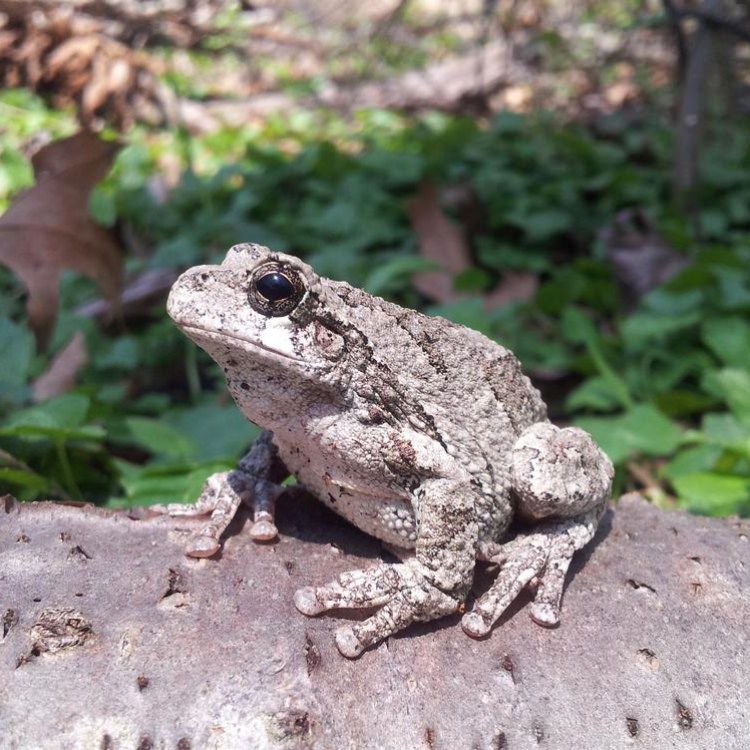
Gray Tree Frog
- Adult Size: 1.5 - 2.0 inches
- Average Lifespan: 6 - 8 years
- Reproduction: Oviparous
- Reproductive Behavior: Mating occurs during warm, rainy nights
- Sound or Call: Distinctive high-pitched trill
- Migration Pattern: Non-migratory
- Social Groups: Solitary
- Behavior: Nocturnal and arboreal
- Threats: Habitat loss, pollution, and pesticides
- Conservation Status: Least Concern
- Impact on Ecosystem: Predator control of insect populations
- Human Use: Pet trade
- Distinctive Features: Big toe pads for climbing, ability to change color
- Interesting Facts: Can survive freezing temperatures by producing antifreeze-like substances
- Predator: Snakes, birds, and small mammals
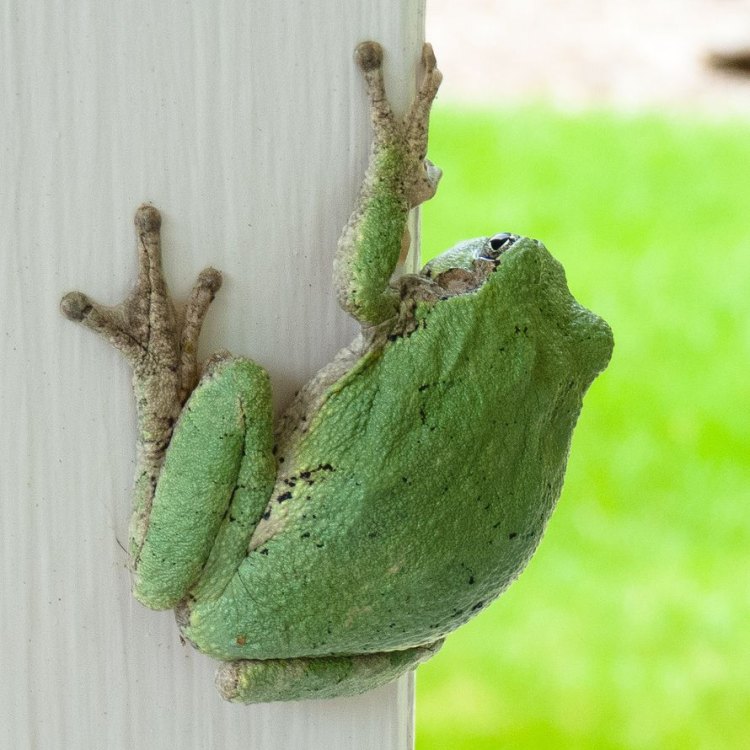
Hyla versicolor
The Amazing Gray Tree Frog: A Unique Amphibian
Nature is full of wonders and one of the most fascinating creatures that inhabits it is the Gray Tree Frog (scientifically known as Hyla versicolor). With its small size, unique features, and interesting behavior, this species of frog has captured the hearts of nature enthusiasts and researchers alike.The Gray Tree Frog is native to the eastern and central regions of North America, and is known for its distinctive high-pitched trills that can be heard during warm, rainy nights. Let's take a closer look at this extraordinary amphibian and discover what makes it so special PeaceOfAnimals.Com.
Appearance and Size
The Gray Tree Frog is a small amphibian, with an adult size ranging from 1.5 to 2.0 inches. They have a slender body with smooth, warty skin that can come in shades of gray, green, or brown, depending on their surroundings. Their skin can also change color slightly, making them excellent at camouflage.
One of their most distinctive features is their large toe pads, which extend beyond their toes. These toe pads are sticky and help them climb trees and other surfaces with ease. The male frogs also have a dark throat, which is used as a vocal sac to amplify their trill.
Lifespan and Reproduction
Gray Tree Frogs have an average lifespan of 6 to 8 years, although they can live up to 10 years in captivity Gigantopithecus. They reach sexual maturity between 2 to 3 years of age and breed from April to July.
These frogs are oviparous, which means they lay eggs instead of giving birth to live young. The female frog can lay up to 1,000 eggs, which are attached to leaves or other vegetation near water bodies. The eggs hatch within a few days, and the tadpoles take about 6 to 8 weeks to metamorphose into adult frogs.
Reproductive Behavior
Mating for Gray Tree Frogs typically occurs during warm, rainy nights. The male frogs will gather around the water bodies and call out to attract females. The males produce a high-pitched trill, which is unique to each individual, and it serves as a way for the females to identify potential mates.
When a male and female pair up, the male will grasp onto the female's back in a behavior known as amplexus. This allows them to remain close while the female lays her eggs. Interestingly, some males have been observed using their toe pads to secure their grip during amplexus.
Migration Pattern and Social Groups
Unlike other amphibians, the Gray Tree Frog is non-migratory. They typically stay within a small area, often near a water source, such as a pond or stream. They are also solitary creatures, only coming together during mating season.
These frogs are nocturnal, which means they are most active at night, and they are also arboreal, meaning they spend most of their time in trees and shrubs. This behavior helps them stay hidden from predators and also aids in catching their prey.
Behavior and Threats
As mentioned, the Gray Tree Frog is primarily active at night, and during the day, they find shelter in trees, under logs or rocks, or in vegetation. They are excellent climbers and use their big toe pads to cling onto surfaces. They are also good jumpers, and when threatened, they will quickly leap away from danger.
Unfortunately, these fascinating creatures face a range of threats, including habitat loss and pollution. Human activities, such as the clearing of forests, can greatly impact their survival. Pesticides and other pollutants present in their habitats can also harm these frogs, as their permeable skin makes them susceptible to environmental toxins.
Conservation Status and Impact on Ecosystem
The good news is that the Gray Tree Frog has been listed as "Least Concern" on the IUCN Red List, meaning they are not facing any immediate risk of extinction. However, their populations are declining, and steps need to be taken to conserve their habitats and protect them from pollutants.
These frogs play an essential role in maintaining the balance of their ecosystem. As predators, they feed on a variety of insects, including mosquitoes and other pests, which helps control their populations. In turn, they also serve as prey for other animals, such as snakes, birds, and small mammals.
Human Use and Interesting Facts
The Gray Tree Frog is also a popular species in the pet trade. However, it is crucial to remember that removing them from their natural habitats can have a negative impact on their populations and the ecosystem as a whole. If considering having a frog as a pet, it is always best to opt for captive-bred individuals.
Aside from their ability to change color and climb trees, Gray Tree Frogs have another impressive feature. In the colder months, when temperatures drop below freezing, these frogs can survive without any damage due to their ability to produce antifreeze-like substances.
In Conclusion
The Gray Tree Frog is truly a remarkable creature and an important part of the natural world. With its unique appearance, interesting behavior, and crucial role in the ecosystem, it's no wonder that it has become a subject of fascination for many. As humans, it's our responsibility to protect and conserve these amazing amphibians and their habitats, so they can continue to thrive and contribute to the beauty and diversity of our planet.
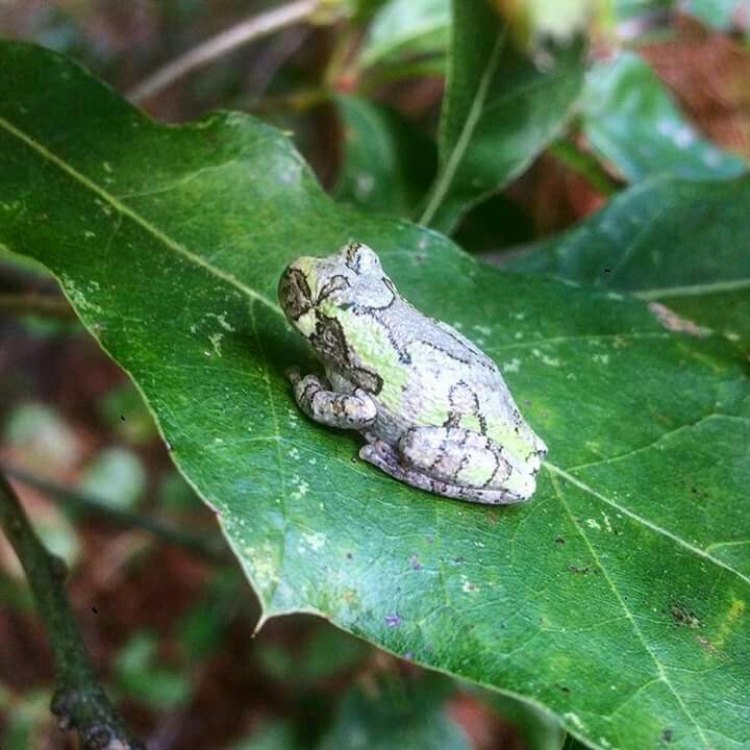
The Cool and Camouflaged Gray Tree Frog: Secrets of One of North America's Most Fascinating Amphibians
Disclaimer: The content provided is for informational purposes only. We cannot guarantee the accuracy of the information on this page 100%. All information provided here may change without prior notice.

